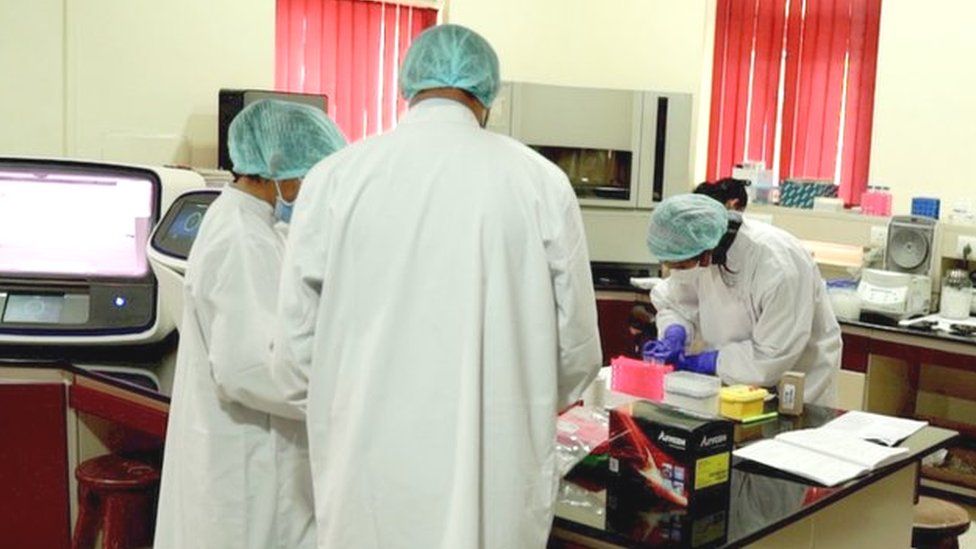(BBC): It’s a frantic time at the National Institute of Virology (NIV) in the western city of Pune, India’s oldest genome sequencing facility.
As the country tries to contain the spread of the Omicron variant, laboratories like the NIV are working round the clock to identify people who might be infected by it.
Every day it receives about 100 throat and nasal swabs sealed in small boxes. That’s roughly five times more samples than it was testing before the omicron variant – first detected in South Africa and now spreading around the world – appeared.
In an airtight room the boxes are opened by researchers wearing protective suits, and the process to isolate the virus begins. The sample is labelled with a number so the scientists don’t know whose swab they’re checking.
“There’s great pressure on us right now to deliver quickly. But we have to do it right, and it’s not an instant process,” says Dr Varsha Potdar, a senior scientist and group leader at NIV. Her phone barely stops ringing.
It takes hours to prepare the sample so that it can be fed into a sequencing machine, which was bought in March last year at the start of the pandemic. The machine generates data, which is then compared by a software programme to the original Covid-19 virus first identified in Wuhan, China. This tells the scientists which variant has been detected.
